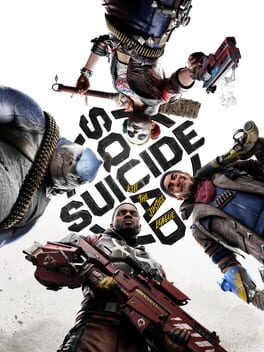Trivia Browser
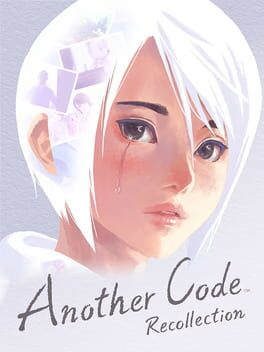
▲
2
▼
 The origami cranes scattered across the games feature a jumbled QR Code pattern that when put together links to the Japanese microsites for Another Code and Another Code: R.
The origami cranes scattered across the games feature a jumbled QR Code pattern that when put together links to the Japanese microsites for Another Code and Another Code: R.
Origami cranes in the games:
https://wccftech.com/how-to/another-code-recollection-guide-how-to-find-14-two-memories-origami-messages/
https://wccftech.com/how-to/another-code-recollection-guide-how-to-find-another-code-r-origami-messages/
Tweet detailing the discovery:
https://twitter.com/Adr0t/status/1765119007584039105
Another Code microsite:
https://www.nintendo.co.jp/ds/anoj/index.html
Another Code: R microsite:
https://www.nintendo.co.jp/wii/rnoj/index.html
Method:
- Look up the file "ditem_PaperCrane" inside Textures2D of the game's data.
- Stitch the texture together into one complete QR Code if necessary.
- Scan it with any QR Code decoder like the one used in smartphones. Resize if necessary.
- QR Code should display the following: https://www.nintendo.co.jp/ds/anoj/index.htmlhttps://www.nintendo.co.jp/wii/rnoj/index.html
The code can be recreated by inputting these URLs exactly as they are shown above into the following Japanese QR Code generator:
https://qr.quel.jp/
https://wccftech.com/how-to/another-code-recollection-guide-how-to-find-14-two-memories-origami-messages/
https://wccftech.com/how-to/another-code-recollection-guide-how-to-find-another-code-r-origami-messages/
Tweet detailing the discovery:
https://twitter.com/Adr0t/status/1765119007584039105
Another Code microsite:
https://www.nintendo.co.jp/ds/anoj/index.html
Another Code: R microsite:
https://www.nintendo.co.jp/wii/rnoj/index.html
Method:
- Look up the file "ditem_PaperCrane" inside Textures2D of the game's data.
- Stitch the texture together into one complete QR Code if necessary.
- Scan it with any QR Code decoder like the one used in smartphones. Resize if necessary.
- QR Code should display the following: https://www.nintendo.co.jp/ds/anoj/index.htmlhttps://www.nintendo.co.jp/wii/rnoj/index.html
The code can be recreated by inputting these URLs exactly as they are shown above into the following Japanese QR Code generator:
https://qr.quel.jp/
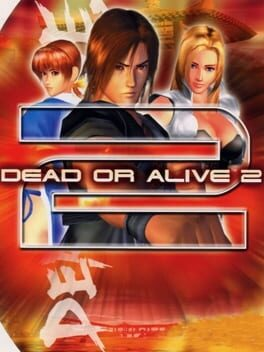
▲
1
▼
 Alongside being in the same key, Ryu Hayabusa's theme music "The shooted" and Ein's theme "Vigaku" both feature a recurring guitar solo. While "Vigaku" plays a few different arrangements of its solo throughout the song, the solo as heard in "The shooted" is played the same way throughout the majority of the song except for the very end, where a different take on it is played. When comparing the primary solos in both "Vigaku" and "The shooted", while both solos play through a similar scale of notes, there are some individual notes in each solo that are different to distinguish them from each other rather than fully recycling them. In the game's soundtrack released on CD, "The shooted" is placed ahead of "Vigaku", suggesting that the solo heard in Ein's theme is meant to be an interpolation of the solo in Ryu's theme. As such, it appears the entire point of these solos being so similar is to highlight the connection between Ein and Ryu as friends that the amnesiac Ein forgot in the game's storyline. The solo that is repeated in the same way in "The shooted" seems to represent who Ryu is, while the different interpolated versions of the solo in "Vigaku" may represent Ein trying to remember his past or Ryu's role in doing so. In Ryu's Story Mode, he knocks Ein out of the tournament, causing him to regain some of his memories including who Ryu is, and he eventually regains the rest of his memories after battling Kasumi at Ryu's request.
Alongside being in the same key, Ryu Hayabusa's theme music "The shooted" and Ein's theme "Vigaku" both feature a recurring guitar solo. While "Vigaku" plays a few different arrangements of its solo throughout the song, the solo as heard in "The shooted" is played the same way throughout the majority of the song except for the very end, where a different take on it is played. When comparing the primary solos in both "Vigaku" and "The shooted", while both solos play through a similar scale of notes, there are some individual notes in each solo that are different to distinguish them from each other rather than fully recycling them. In the game's soundtrack released on CD, "The shooted" is placed ahead of "Vigaku", suggesting that the solo heard in Ein's theme is meant to be an interpolation of the solo in Ryu's theme. As such, it appears the entire point of these solos being so similar is to highlight the connection between Ein and Ryu as friends that the amnesiac Ein forgot in the game's storyline. The solo that is repeated in the same way in "The shooted" seems to represent who Ryu is, while the different interpolated versions of the solo in "Vigaku" may represent Ein trying to remember his past or Ryu's role in doing so. In Ryu's Story Mode, he knocks Ein out of the tournament, causing him to regain some of his memories including who Ryu is, and he eventually regains the rest of his memories after battling Kasumi at Ryu's request.
The shooted:
https://www.youtube.com/watch?v=22CyhSRCiuc
Vigaku:
https://www.youtube.com/watch?v=fi-JzGvEnjg
Hayabusa story mode:
https://www.youtube.com/watch?v=zii2FvB4CsU?t=275
Dead or Alive 2 soundtrack:
https://www.youtube.com/playlist?list=PLkk3uj39Q6m3Za4HlC9fM56pB6FkQCHUK
https://www.discogs.com/release/14059575-Shigekiyo-Okuda-Makoto-Hosoi-Dead-Or-Alive-2-Original-Sound-Trax-Playstation-2-Version
https://www.youtube.com/watch?v=22CyhSRCiuc
Vigaku:
https://www.youtube.com/watch?v=fi-JzGvEnjg
Hayabusa story mode:
https://www.youtube.com/watch?v=zii2FvB4CsU?t=275
Dead or Alive 2 soundtrack:
https://www.youtube.com/playlist?list=PLkk3uj39Q6m3Za4HlC9fM56pB6FkQCHUK
https://www.discogs.com/release/14059575-Shigekiyo-Okuda-Makoto-Hosoi-Dead-Or-Alive-2-Original-Sound-Trax-Playstation-2-Version

▲
1
▼
In the Bizarre Room in Wonderland, the fireplace's flames can be "put out" if Sora attacks the fireplace's grated opening with a Blizzard spell, and it can be lit anew if the grated opening is hit with Fire magic instead. Being able to put out the fire makes the second phase of the Trickmaster Heartless boss fight even easier, as the frantic boss cannot light their juggling apparatuses and fling their own Fire at Sora. This is also possibly why the Cheshire Cat gifts Sora a Blizzard spell/upgrade when Sora obtains and shows him at least the Claw Marks piece of evidence during Alice's trail, and also why the grated opening itself is able to be locked onto.
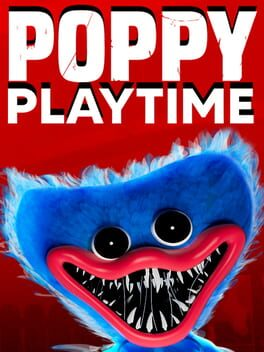
▲
2
▼
One of the picture frames seen in Chapter 3's Home Sweet Home area contains the phrase "A clap and a half to you. We'll miss you." This is a reference to a catchphrase used by YouTuber Matthew "MatPat" Patrick, the host of the webseries "Game Theory", who had announced that he would be retiring from making YouTube content a few days before the chapter was released.
Franchise: Ace Attorney
▲
2
▼
In the English dub of the Ace Attorney anime, the character Furio Tigre is voiced by Sam Riegel, the English voice of series protagonist Phoenix Wright starting with his appearance in Ultimate Marvel vs. Capcom 3 (with the exception of Professor Layton vs. Phoenix Wright: Ace Attorney, where Phoenix was instead voiced by Trevor White). Based on a tweet from Kyle Phillips, the voice director for the dub, this appears to be intentional, as the case Tigre was involved in, "Recipe for Turnabout", involved him Spoiler:posing as Phoenix in a plot to frame Maggey Byrde for murder.
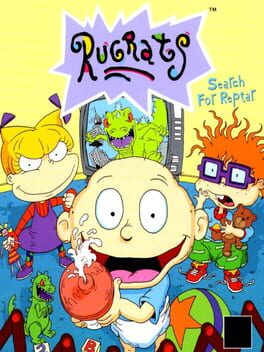
▲
1
▼
 In the Egyptian stage of the Ice Cream Mountain level, Mr. Friend can be found wandering inside the pyramid wrapped up in bandages like a mummy and will follow the player if found. Luring Mr. Friend to the exit of the pyramid will cause him to fall apart into pieces and despawn right before he can leave.
In the Egyptian stage of the Ice Cream Mountain level, Mr. Friend can be found wandering inside the pyramid wrapped up in bandages like a mummy and will follow the player if found. Luring Mr. Friend to the exit of the pyramid will cause him to fall apart into pieces and despawn right before he can leave.
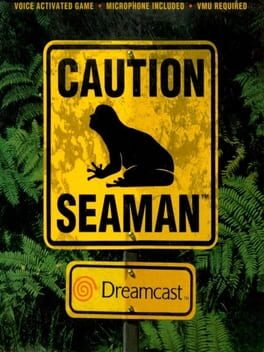
This trivia has been marked as "Not Safe for Work".
It may not be appropriate for all visitors and definitely isn't appropriate for work or school environments.
Click here to unhide it.
It may not be appropriate for all visitors and definitely isn't appropriate for work or school environments.
Click here to unhide it.
▲
5
▼
Time Extension article:
https://www.timeextension.com/news/2024/02/nsfw-easter-egg-discovered-in-dreamcast-title-seaman
Reddit comments:
https://www.reddit.com/r/dreamcast/comments/19e2vog/comment/kjasibm/
https://www.reddit.com/r/dreamcast/comments/19e2vog/comment/kjb7pr2/
https://www.reddit.com/r/dreamcast/comments/19e2vog/comment/kjdg24a/
https://www.timeextension.com/news/2024/02/nsfw-easter-egg-discovered-in-dreamcast-title-seaman
Reddit comments:
https://www.reddit.com/r/dreamcast/comments/19e2vog/comment/kjasibm/
https://www.reddit.com/r/dreamcast/comments/19e2vog/comment/kjb7pr2/
https://www.reddit.com/r/dreamcast/comments/19e2vog/comment/kjdg24a/
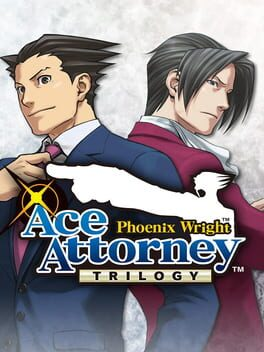
subdirectory_arrow_right Apollo Justice: Ace Attorney Trilogy (Game), The Great Ace Attorney Chronicles (Game), Ace Attorney (Franchise)
▲
1
▼
A running gag throughout the Ace Attorney series involves the protagonist and his assistant having a conversation about the difference between a ladder and a stepladder. First occurring in "Turnabout Samurai", the third case of Phoenix Wright: Ace Attorney, a stepladder has appeared in at least one location in each game to date (with the exception of The Great Ace Attorney: Adventures) for the sole purpose of continuing the tradition. The conversation generally goes as follows: after examination, the protagonist and one of their partner characters engage in a debate about the usage of the words "ladder" and "stepladder", and the difference between the two. Usually, one will accuse the other of being too absorbed in the details instead of looking at the big picture to realize that they both serve roughly the same function, to which the latter's response will often vary. Additionally, similar gags in regards to other items in the series have also been used, particularly in The Great Ace Attorney games, which primarily use a variant of the debate involving the difference between a shovel and a spade instead.
Within the various re-releases of the Ace Attorney games, an achievement is added that can be unlocked for engaging in every "ladder vs. stepladder" debate within the games featured in that collection. In the case of The Great Ace Attorney Chronicles, a second achievement for engaging in every "shovel vs. spade" debate within the two games is also included.
Within the various re-releases of the Ace Attorney games, an achievement is added that can be unlocked for engaging in every "ladder vs. stepladder" debate within the games featured in that collection. In the case of The Great Ace Attorney Chronicles, a second achievement for engaging in every "shovel vs. spade" debate within the two games is also included.
Fandom article about the gag (includes a full list of every instance of the gag in the series, as well as similar debates):
https://aceattorney.fandom.com/wiki/Ladder_vs._stepladder
Phoenix Wright: Ace Attorney Trilogy achievement list:
https://steamcommunity.com/stats/787480/achievements
Apollo Justice: Ace Attorney Trilogy achievement list:
https://steamcommunity.com/stats/2187220/achievements
The Great Ace Attorney Chronicles achievement list:
https://steamcommunity.com/stats/1158850/achievements
https://aceattorney.fandom.com/wiki/Ladder_vs._stepladder
Phoenix Wright: Ace Attorney Trilogy achievement list:
https://steamcommunity.com/stats/787480/achievements
Apollo Justice: Ace Attorney Trilogy achievement list:
https://steamcommunity.com/stats/2187220/achievements
The Great Ace Attorney Chronicles achievement list:
https://steamcommunity.com/stats/1158850/achievements
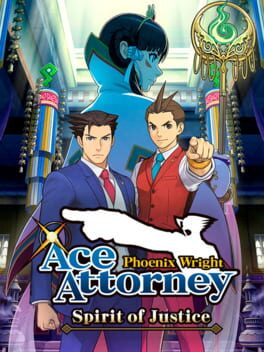
▲
1
▼
The pattern on Gaspen Payne's sash is modeled after the first character of his Japanese family name, "Auchi" (亜内).
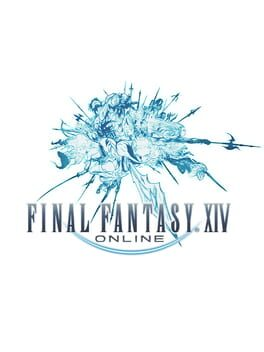
▲
1
▼
According to Final Fantasy XVI's creative director/scenario writer Kazutoyo Maehiro and the game's producer Naoki Yoshida in a 2023 IGN article, in the Japanese version of the game, Chocobos are referred to as "uma" (馬), which is the Japanese word for "horse". Initially, neither Maehiro or director Hiroshi Takai considered using Chocobos in the game at all, because according to Maehiro, "when thinking about the story, the worldview, and a feeling of reality, a horse just looked better as a silhouette when straddled." Yoshida elaborated that horses fit better when building a world based on European medieval gothic fantasy:
Despite this explanation, Yoshida still instructed the development team to include Chocobos in the game in an effort to stay faithful to the series' long-standing elements. The Japanese version also still refers to them as Chocobos and horses interchangeably. Maehiro stated that he tried to tie the Chocobos into the history of Valisthea through partnerships with its people, in an effort to create something culturally familiar. He justified this by stating that in Japanese, they "sometimes refer to a car as 'legs', or not having a car as 'having no legs'; and in the same way, the people of Valisthea refer to Chocobos as 'horses'." He subsequently implied that actual horses may exist in other regions in the game's world, but that in Valisthea, Chocobos function as their regional equivalent to actual horses. Localization director Michael-Christopher Koji Fox also stated that he decided not to refer to Chocobos as horses in the game's English translation:
The terminology in the decision to refer to Chocobos as horses resulted in confused or joking reactions from Japanese players online, since this is not the first time Chocobos were referred to as horses in the series. In the original 2010 release of Final Fantasy XIV Online, the kanji characters for horse and bird (鳥 , "tori") were used together as "horsebird" (馬鳥) in the Japanese script in place of the standard katakana for Chocobo (チョコボ). At release, several other katakana terms were replaced with kanji symbols, with some terms existing in-game as written in Chinese rather than Japanese. Square Enix offered several conflicting explanations for the changes, including the need to "build atmosphere", and to consolidate terminology with the then-upcoming Chinese-language release, but these did not help as the change caused an uproar among Japanese players, resulting in Chocobo being reincorporated into the Japanese version's script in a future update. The controversy would later be referenced in the 2013 reboot of Final Fantasy XIV Online through a piece of dialogue spoken by Golden Uma Doshin, a Quest NPC found in Central Shroud as part of the limited time quest "Turn Around, Beautiful":
"In reality, horses are animals that can build strong partnerships with humans. We share a long history with them. Weapons involving horses also appear more realistic. Especially with the improvement in graphics being so remarkable, there is a chance that it becomes difficult to lie or deceive viewers, in a good way, and as a result, may impair the sense of immersion. Chocobos are based on birds, which first of all means they don’t stand on four legs, and that makes them more difficult to mount. When compared with a horse it might not feel as stable to ride a Chocobo, and their wings aren’t big and strong enough to take you to the sky, either."
Despite this explanation, Yoshida still instructed the development team to include Chocobos in the game in an effort to stay faithful to the series' long-standing elements. The Japanese version also still refers to them as Chocobos and horses interchangeably. Maehiro stated that he tried to tie the Chocobos into the history of Valisthea through partnerships with its people, in an effort to create something culturally familiar. He justified this by stating that in Japanese, they "sometimes refer to a car as 'legs', or not having a car as 'having no legs'; and in the same way, the people of Valisthea refer to Chocobos as 'horses'." He subsequently implied that actual horses may exist in other regions in the game's world, but that in Valisthea, Chocobos function as their regional equivalent to actual horses. Localization director Michael-Christopher Koji Fox also stated that he decided not to refer to Chocobos as horses in the game's English translation:
"I remember seeing it in the script and remarking, 'You're saying 'horse' here. You're sure that's OK?' But Maehiro said, 'Yes, this is what we wanted to do.' In English, we never really wanted to use the word horse, because Chocobos and horses are entirely different. It just sounded weird to us in that sense. But we do use words like 'steed'; and I think 'courser' [a medieval word for a warhorse,] as well."
The terminology in the decision to refer to Chocobos as horses resulted in confused or joking reactions from Japanese players online, since this is not the first time Chocobos were referred to as horses in the series. In the original 2010 release of Final Fantasy XIV Online, the kanji characters for horse and bird (鳥 , "tori") were used together as "horsebird" (馬鳥) in the Japanese script in place of the standard katakana for Chocobo (チョコボ). At release, several other katakana terms were replaced with kanji symbols, with some terms existing in-game as written in Chinese rather than Japanese. Square Enix offered several conflicting explanations for the changes, including the need to "build atmosphere", and to consolidate terminology with the then-upcoming Chinese-language release, but these did not help as the change caused an uproar among Japanese players, resulting in Chocobo being reincorporated into the Japanese version's script in a future update. The controversy would later be referenced in the 2013 reboot of Final Fantasy XIV Online through a piece of dialogue spoken by Golden Uma Doshin, a Quest NPC found in Central Shroud as part of the limited time quest "Turn Around, Beautiful":
"Chocobo... chocobo... chocobo... Nothing but horsebirds in this stable. A sight to disturb Eastern eyes, to be sure."
IGN: Chocobos are Called 'Horses' in the Japanese Version of Final Fantasy XVI:
https://www.ign.com/articles/chocobos-are-called-horses-in-final-fantasy-xvi-japanese-version
Censored Gaming: In The Japanese Version Of Final Fantasy XVI, Chocobos Are Called "Horses":
https://www.youtube.com/watch?v=7AT-QpAwkqQ
Destructoid: Final Fantasy XIV text issue turns Chocobos to Horsebirds:
https://www.destructoid.com/final-fantasy-xiv-text-issue-turns-chocobos-to-horsebirds/
Final Fantasy XIV Online wiki articles:
https://ffxiv.consolegameswiki.com/wiki/Golden_Uma_Doshin
https://ffxiv.consolegameswiki.com/wiki/Turn_Around,_Beautiful
https://www.ign.com/articles/chocobos-are-called-horses-in-final-fantasy-xvi-japanese-version
Censored Gaming: In The Japanese Version Of Final Fantasy XVI, Chocobos Are Called "Horses":
https://www.youtube.com/watch?v=7AT-QpAwkqQ
Destructoid: Final Fantasy XIV text issue turns Chocobos to Horsebirds:
https://www.destructoid.com/final-fantasy-xiv-text-issue-turns-chocobos-to-horsebirds/
Final Fantasy XIV Online wiki articles:
https://ffxiv.consolegameswiki.com/wiki/Golden_Uma_Doshin
https://ffxiv.consolegameswiki.com/wiki/Turn_Around,_Beautiful
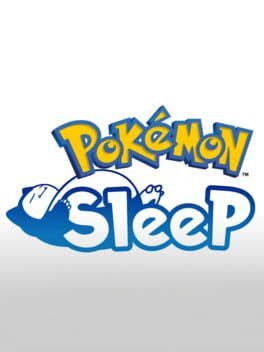
▲
2
▼
 One of Ditto's Sleep Styles, called Rock-Formed Sleep, has it turning into a stone. This is a reference to its Pokémon Gold Pokédex entry: "It can transform into anything. When it sleeps, it changes into a stone to avoid being attacked."
One of Ditto's Sleep Styles, called Rock-Formed Sleep, has it turning into a stone. This is a reference to its Pokémon Gold Pokédex entry: "It can transform into anything. When it sleeps, it changes into a stone to avoid being attacked."
Pokémon Sleep - Ditto sleeping:
https://www.serebii.net/pokemonsleep/pokemon/ditto.shtml
Pokémon Gold - Ditto Pokédex entry:
https://pokemondb.net/pokedex/ditto#dex-flavor
https://www.serebii.net/pokemonsleep/pokemon/ditto.shtml
Pokémon Gold - Ditto Pokédex entry:
https://pokemondb.net/pokedex/ditto#dex-flavor
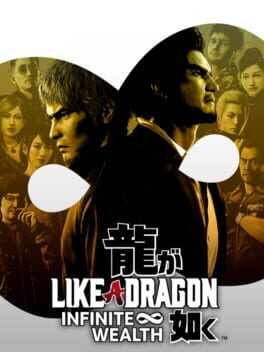
▲
2
▼
Sujimon Sensei describes Hawaii as being "blessed by the sun and the moon." Considering that Sujimon Sensei and several other related elements introduced in Yakuza: Like a Dragon are parodies of the Pokémon series, this line is most likely a reference to Pokémon Sun & Moon, which takes place in a region inspired by Hawaii.
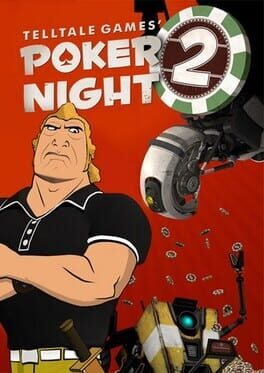
▲
1
▼
Claptrap's bounty item is his 2012 Character of the Year award from the Spike Video Game Awards. In the cutscene of him putting the bounty on the table for the tournament, GLaDOS says that it looks familiar. This is a reference to how Portal 2 was nominated for and won six awards at the 2011 Spike VGAs, with GLaDOS and Wheatley's voice actors, Ellen McLain and Stephen Merchant, also winning awards for Best Performance by a Human Female/Male respectively.
Claptrap bounty guide:
https://www.youtube.com/watch?v=wWpJi6omGek
2011 Spike TV Video Game Awards nominees:
https://www.prnewswire.com/news-releases/spike-tv-announces-2011-video-game-awards-winners-135392198.html
https://www.youtube.com/watch?v=wWpJi6omGek
2011 Spike TV Video Game Awards nominees:
https://www.prnewswire.com/news-releases/spike-tv-announces-2011-video-game-awards-winners-135392198.html
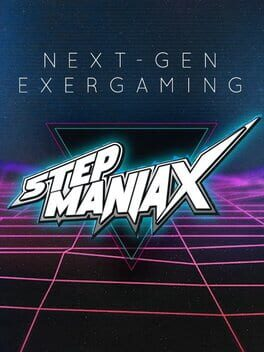
▲
1
▼
Every song in the game has unique patterns playing on the step panels which, like the on-screen video, are synced to the music. Some notable examples include:
• Max428: The current BPM is displayed.
• Robot World: Binary Code runs on the top and bottom of the pads, reading "Robots would tap stars!"
• Xuxa: a duck is shown floating across the playfield.
• Flight of the Bumblebee: bees are shown flying across the panels dodging a flyswatter.
• Max428: The current BPM is displayed.
• Robot World: Binary Code runs on the top and bottom of the pads, reading "Robots would tap stars!"
• Xuxa: a duck is shown floating across the playfield.
• Flight of the Bumblebee: bees are shown flying across the panels dodging a flyswatter.

▲
1
▼
On the Name Entry screen, when attempting to submit an inappropriate name (i.e. profanity, sexual content), it will instead be replaced with a different, more appropriate name. Humorously, this also applies when attempting to submit the names DDR (an abbreviation for rival series Dance Dance Revolution) or 573 (The "Konami Number", Konami being the company behind DDR), as they will be replaced with "SMX" (abbreviation for StepManiaX) and 123 respectively.
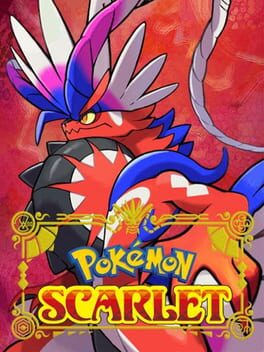
subdirectory_arrow_right Pokémon Violet (Game)
▲
1
▼
 The Pokémon Baxcalibur features some similarities and references to the kaiju movie monster Godzilla:
The Pokémon Baxcalibur features some similarities and references to the kaiju movie monster Godzilla:• Baxcalibur has a back fin similar to both Godzilla's backplates, and to the Spanish theropod dinosaur Concavenator.
• Its Pokédex entry in Pokémon Violet, as well as its signature movie Glaive Rush, appear to be a reference to a scene from the 1971 film "Godzilla vs. Hedorah" in which Godzilla flings himself into the air using his nuclear breath, and uses his dorsal fins and weight to attack Hedorah:
"It launches itself into battle by flipping upside down and spewing frigid air from its mouth. It finishes opponents off with its dorsal blade."
• Arctibax evolves into Baxcalibur at level 54, a reference to the first Godzilla film being released in 1954.
Article on Godzilla similarities:
https://www.cbr.com/pokemon-scarlet-violet-baxcalibur-godzilla/
Baxcalibur Glaive Rush move:
https://www.youtube.com/watch?v=-B4n6jCDQNY
Godzilla vs. Hedorah flying scene:
https://www.youtube.com/watch?v=2masC9_WCw8
Concavenator Wikipedia article:
https://en.wikipedia.org/wiki/Concavenator
Godzilla (1954 film) Wikipedia article:
https://en.wikipedia.org/wiki/Godzilla_(1954_film)
https://www.cbr.com/pokemon-scarlet-violet-baxcalibur-godzilla/
Baxcalibur Glaive Rush move:
https://www.youtube.com/watch?v=-B4n6jCDQNY
Godzilla vs. Hedorah flying scene:
https://www.youtube.com/watch?v=2masC9_WCw8
Concavenator Wikipedia article:
https://en.wikipedia.org/wiki/Concavenator
Godzilla (1954 film) Wikipedia article:
https://en.wikipedia.org/wiki/Godzilla_(1954_film)
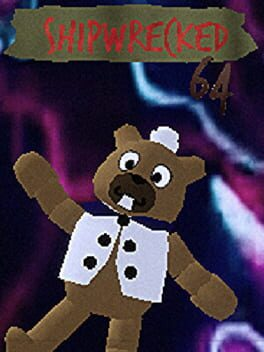
▲
1
▼
Two of the game's achievements are references to popular memes. The first, titled "WHERE'S THE LAMB SAUCE" (awarded for failing Giovanni Goose's minigame), is a reference to the American adaptation of British reality show "Hell's Kitchen": in an episode from 2006, Chef Gordon Ramsey berates a kitchen full of chefs, demanding to know where the lamb sauce is for a dish being made. The second, titled "A Happy Little Accident" (awarded for clearing Stumbler O'Hare's minigame), is a reference to the art instruction show "The Joy of Painting": host Bob Ross was famous for the phrase "We don't make mistakes, just happy little accidents," which is often seen as a guiding principle for the unpredictable nature of life.
Achievement list:
https://steamcommunity.com/stats/2160220/achievements/
Gordon Ramsey's Lamb Sauce meme explained:
https://knowyourmeme.com/memes/gordon-ramsays-lamb-sauce
Happy Little Accident meme explained:
https://www.linkedin.com/pulse/embracing-happy-little-accidents-life-lessons-from-bob-paul-zarou-rurfe/
https://steamcommunity.com/stats/2160220/achievements/
Gordon Ramsey's Lamb Sauce meme explained:
https://knowyourmeme.com/memes/gordon-ramsays-lamb-sauce
Happy Little Accident meme explained:
https://www.linkedin.com/pulse/embracing-happy-little-accidents-life-lessons-from-bob-paul-zarou-rurfe/

▲
2
▼
 In Final Egg, two large stasis tubes can be found. One holds Metal Sonic, while the other holds an unknown Sonic-based robot, later referred to as Mecha Sonic Mark III by Ian Flynn. This robot has no importance in the story, however, it seems to be based heavily on the design of Mechagodzilla from the "Godzilla" franchise's Shōwa era, due to many similar parts and possible textures from the robot. This also seems to be a reference to Mecha Sonic Mark I, also known as Silver Sonic from Sonic the Hedgehog 2, whose concept art also shows similarities to Mechagodzilla.
In Final Egg, two large stasis tubes can be found. One holds Metal Sonic, while the other holds an unknown Sonic-based robot, later referred to as Mecha Sonic Mark III by Ian Flynn. This robot has no importance in the story, however, it seems to be based heavily on the design of Mechagodzilla from the "Godzilla" franchise's Shōwa era, due to many similar parts and possible textures from the robot. This also seems to be a reference to Mecha Sonic Mark I, also known as Silver Sonic from Sonic the Hedgehog 2, whose concept art also shows similarities to Mechagodzilla.
Detailed comparison tweet:
https://twitter.com/MainJPW/status/1355253093605249025
Mecha Sonic Mark III name reference:
https://www.youtube.com/watch?v=ielPq4miRsE&t=573s
https://twitter.com/MainJPW/status/1355253093605249025
Mecha Sonic Mark III name reference:
https://www.youtube.com/watch?v=ielPq4miRsE&t=573s
